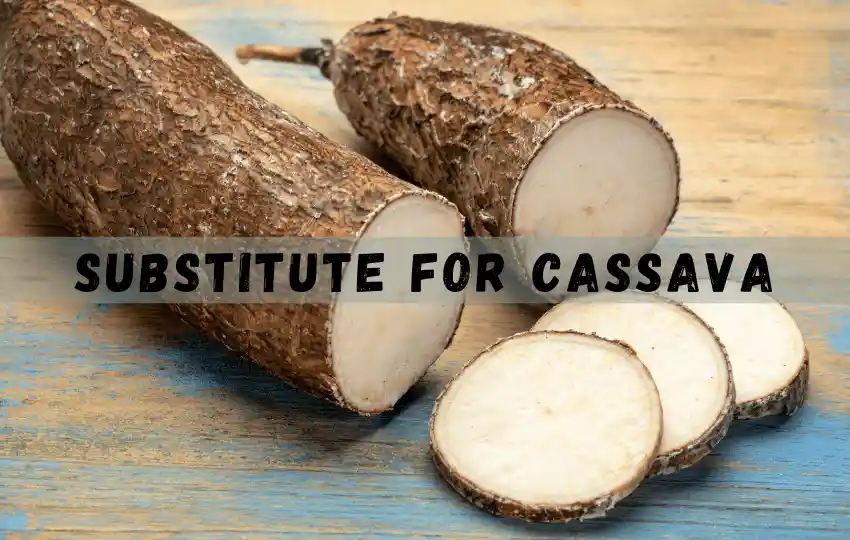Cassava is a starchy root vegetable widely used as a staple food in multiple parts of the world.
While it has numerous nutritional benefits, it does have some drawbacks – namely, its high carbohydrate content and lack of essential vitamins and minerals.
Fortunately, there are several excellent substitutes for cassava that can provide similar nutritional benefits without relying solely on one ingredient.
Each of these options provides an array of nutrients that make them suitable replacements for cassava in any recipe or meal plan.
This article will discuss the best substitute for cassava so you can get all the nutrition your body requires while still enjoying delicious meals.
In short, " What can I use instead of cassava?" Sweet Potatoes, Potatoes, Taro Root, Yam, Plantains, Arrowroot Powder, Quinoa Flour, Ground Coconut Flour, Cornstarch & Potato Starch, Rice Flour, and Tapioca Flour.
What is cassava, and what does cassava taste like?
Cassava, or yuca or manioc, is a starchy root vegetable widely consumed in tropical regions. It is a staple food in multiple parts of Africa, Asia, and Latin America.
In addition to being a valuable energy source, cassava also provides essential vitamins and minerals such as vitamin C, thiamin, niacin, calcium and phosphorus. Cassava leaves are also eaten as a vegetable in some parts of the world.
Cassava is known for its versatility and can be prepared in various ways.
In terms of taste, cassava has a mild, slightly sweet flavor with a hint of nuttiness. The taste is often defined as similar to that of a potato or a mild yam.
The flavor profile is relatively neutral, allowing cassava to be utilized in sweet and savory dishes.
The texture of cassava can vary depending on how it is prepared.
When cooked, cassava has a firm and slightly fibrous texture. It can be boiled, steamed, fried, or roasted to achieve different textures and flavors.
It’s important to note that cassava contains naturally occurring cyanide compounds, which are removed through proper processing methods.
Therefore, it is crucial to prepare and cook cassava correctly to ensure its safety for consumption.
Uses of cassava
The uses of cassava are numerous, from cooking to industrial applications.
In terms of food, cassava is mainly boiled or fried and eaten as a staple food in many developing countries.
It can also use to make flour and other products, such as fufu, bread, beer, tapioca pudding and gari (a form of couscous).
Cassava can also be processed into industrial products such as glucose syrup, ethanol fuel, plywood-like boards for construction and animal feed.
Furthermore, the high starch content found in cassava makes it an excellent source for making biofuel pellets which can use as an alternative cooking fuel due to their affordability compared to traditional fuels like kerosene or charcoal.
Additionally, cassava starch can be used as a thickener in various industries, including food production.
Therefore cassava offers numerous uses, both from culinary and medicinal perspectives.
Where to buy cassava?
If you are looking for cassava where to buy, there are a few other places you can go. Many specialty food stores carry it, as do some international grocery stores.
You can also order online from many retailers that provide a variety of diverse flavors and types of cassava.
The best substitute for cassava
1. Sweet Potatoes – a good Substitute for cassava
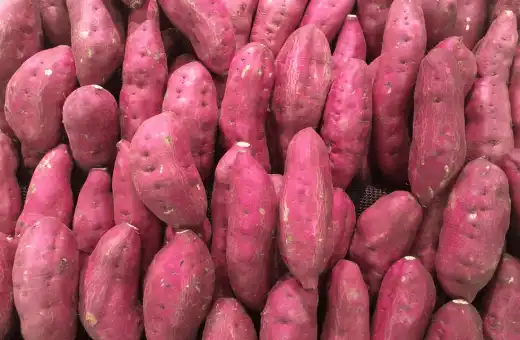
Sweet potatoes can serve as a great substitute for cassava, as they have similar textures and can be cooked in similar ways.
Ratio or measurement: To use sweet potatoes as a substitute for cassava, simply swap them out 1:1 in recipes that call for cassava.
For example, if a recipe wants one cup of grated cassava, replace it with one cup of grated sweet potato. Sweet potatoes can be boiled, mashed, fried or roasted to create flavorful dishes.
2. Potatoes – Similar to cassava
Potatoes are another great substitute for cassava due to their similar textures and flavors when cooked.
Ratio or measurement: As with sweet potatoes, the amount of potato used should be equal to the amount of cassava called for in recipes.
Depending on the dish being prepared, potatoes may need to be peeled before cooking or mashed after boiling to create smooth textures like those found in boiled cassava dishes.
3. Try Taro Root instead of cassava
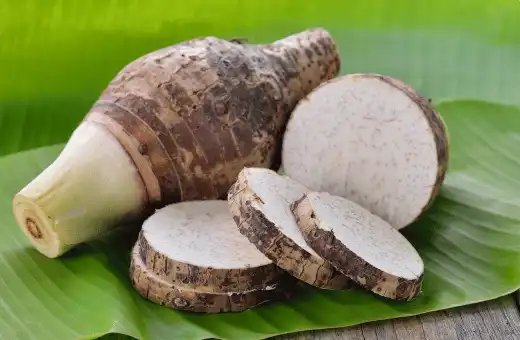
Taro root is a starchy vegetable that has a texture and flavor most similar to that of cassava when cooked.
It also has approximately the same calorie content as cassava and can be used as a direct replacement in most dishes calling for the tuberous root vegetable.
Ratio or measurement: Simply use 1 cup of mashed taro root in place of 1 cup of grated or mashed cassava when preparing dishes such as puddings and side dishes like fufu or stir fry.
4. Yam – Similar like cassava
Yams are an excellent substitution for most recipes calling for cassava due to their creamy texture and mild flavor when cooked.
To use yam as a replacement in recipes requiring grated or boiled pieces of the tuberous root vegetable.
Ratio or measurement: Use one cup of yam per one cup of called-for amounts of cassava; this holds true when replacing mashed pieces too!
Yams can be boiled, baked or steamed depending on the recipe being prepared and provide delicious flavors and textures that pair well with other ingredients often found alongside cassava, such as coconut milk and herbs like cilantro or parsley!
5. Plantains – a great alternative to cassava
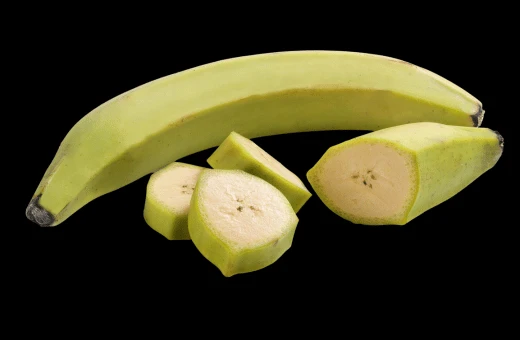
Plantains are an excellent way to add sweetness and flavor to dishes calling for cassava due to their naturally sweet taste when ripe (or cooked).
Ratio or measurement: To use plantains instead of cassava, simply swap out equal amounts per recipe needed.
So if a recipe wants two cups of grated cassava, you’ll want two cups of ripe but not overly ripe plantains – then cook accordingly by baking them or boiling them with appropriate flavors applied (like coconut milk!).
6. Arrowroot Powder – Similar like cassava
Arrowroot powder is derived from tubers like Cassavas and makes an excellent thickening agent in place of traditional Cassavas when mixed with water or other liquids prior to adding it to your recipe(s).
Ratio or measurement: To replace cassava in any dish using arrowroot powder, mix together two tablespoons per every cup needed, then add it directly into your sauce mixture while stirring continuously until thickened.
This is especially useful if you’re making gravies!
7. Use Quinoa Flour to replace cassava
Quinoa flour is produced from ground quinoa seeds which have been processed down into a powder-like consistency.
And making it the perfect substitute for gluten-free versions of traditional recipes requiring cassava (which don’t contain gluten themselves).
Ratio or measurement: When substituting quinoa flour, you'll want three tablespoons per every tablespoon required by your recipe.
Bear in mind; however, quinoa flour should NOT be used in any raw applications as heat will allow it to thicken up properly, just like traditional flours do!
8. Ground Coconut Flour – Similar to cassava
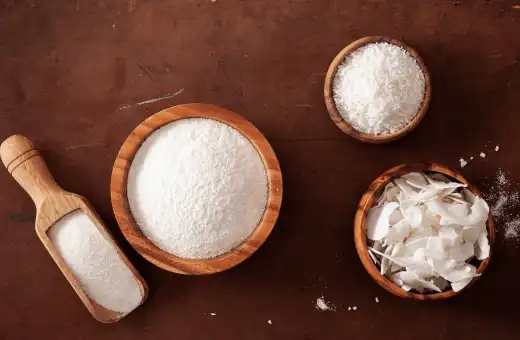
Ground coconut flour is derived from dried coconuts which have been ground up into a finely milled powder making it another perfect substitution ingredient for any gluten-free bakes needing traditional flours containing gluten (Cassavas don’t contain gluten).
Ratio or measurement: When using ground coconut flour, you'll want three tablespoons per every tablespoon required by your recipe.
Just remember NOT to eat this raw since heat is what helps activate its natural thickening properties!
9. Cornstarch & Potato Starch – decent replacement for cassava
Both cornstarch & potato starch act very similarly once added to hot liquid mixtures helping them thicken right away.
They also make good substitutes for any baking applications needing traditional flour containing gluten (cassava does not contain gluten).
Ratio or measurement: When replacing either cornstarch & potato starch, you'll want two tablespoons per every tablespoon required by your recipe.
Just remember NOT to eat these starches raw since heat activates their natural thickening properties best!
10. Rice Flour – Similar to cassava
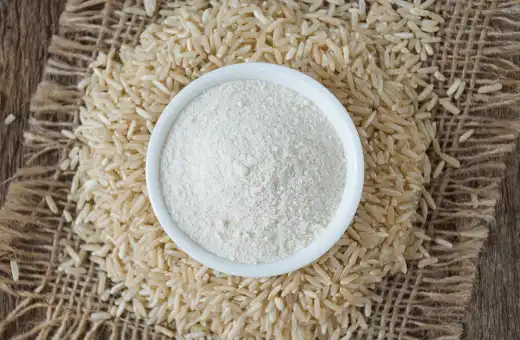
Rice flour is another great gluten-free substitution ingredient made from finely milled down rice.
Making it perfect if you’re looking at producing highly dense baked goods without using all-purpose flours containing gluten (cassava does not contain gluten).
Ratio or measurement: For each tablespoon required by your particular recipe, simply use three tablespoons of rice flour instead.
Bear in mind, however, when using rice flour, you’ll want to bake or cook the ingredients thoroughly before serving, as eating raw can cause unpleasant tastes and textures.
11. Tapioca Flour – A good Substitute for cassava
The last substitution on our list is tapioca flour – derived from the Cassava root itself; tapioca acts very similarly once added into hot liquid mixtures helping them thicken right away just like cornstarch & potato starch do!
Ratio or measurement: When replacing tapioca flour, you'll want two tablespoons per every tablespoon required by your recipe.
Remember NOT to eat this raw since heat activates its natural thickening properties best!
Substitute for cassava in baking
In baking, yuca or tapioca can be used as a substitute for cassava. Yuca is the Spanish word for cassava, while tapioca is a starch removed from the root of the cassava plant.
Both are widely used in Latin American cooking and are perfect substitutes for cassava when making baked goods.
Yuca and tapioca are both gluten-free and low on the glycemic index, making them healthier options than wheat flour when baking.
In addition, they have their own unique texture that offers an interesting variation from more traditional baking recipes.
Tapioca flour can create a crispy crust on baked goods, while yucca gives them a more cake-like consistency.
The flavor of these ingredients also adds its own unique twist to recipes such as cakes, muffins, and cookies.
When using either yucca or tapioca as an alternative to cassava in baking, it is important to remember that they absorb moisture differently than wheat flour does.
As a result, you may require to adjust certain elements in your recipe, such as the amount of liquid you add and even cooking times to get the desired result.
Substitute for cassava leaves
Substitutes for cassava leaves include kale, spinach, chard, mustard greens, and arugula. These leafy vegetables are high in essential vitamins and minerals like iron, folate, and vitamin K.
They also contain extensive amounts of dietary fiber, which can help support digestive health. Many of these leafy greens are a great source of antioxidants to help defend against free radical damage and inflammation.
Additionally, they are lower in calories, making them an ideal addition to any healthy diet.
FAQs on Substitute for cassava
Q1. What vegetable is similar to cassava?
Cassava, or manioc or yucca, is a root vegetable similar to sweet potatoes. It has a starchy surface and a mild, slightly sweet flavor.
Cassava is rich in dietary fiber, which can help support healthy digestive function and weight management.
Additionally, cassava is packed with essential minerals such as iron, magnesium, phosphorous and zinc.
It is an amazing vitamin C and folate source, two nutrients important for overall health maintenance and immune system support.
Interestingly, cassava also contains resistant starch; this type of starch is not digested by your body like other types of carbohydrates but moves through the digestive tract unaltered, where it can help promote healthy bacteria growth in the gut.
Q2. What can I use instead of cassava rice?
An excellent alternative to cassava rice is quinoa. Quinoa is a whole grain that is inherently gluten-free and incorporates all nine essential amino acids. It contains protein, fiber, vitamins, minerals, and antioxidants.
Quinoa has a similar texture to rice but provides more nutritional value than other grains.
Additionally, it cooks quickly and can use as a substitute for rice in many dishes. Quinoa is also available in different colors depending on the variety you purchase, so it adds a great visual appeal to dishes.
Q3. Can I replace cassava flour with regular flour?
Yes, you can replace cassava flour with regular flour. The two flours have different nutritional profiles and textures, so there may be some differences in the end, result when baking.
Cassava flour is slightly lower in protein and fat than regular wheat flour. It is gluten-free and has a little sweet flavor when baked. It is also high in fiber and resistant to starch, which can help make baked goods more filling.
The texture of the finished product tends to be drier than if made with regular wheat flour.
Regular wheat flour is higher in protein and fat than cassava flour, and it has a more robust flavor profile when baked. Regular wheat flour makes for a light, fluffy texture that many people prefer in their baking projects.
Depending on what you’re making, either flour may work well. If you are searching for a less processed option, or if you are trying to reduce gluten intake in your diet, then cassava flour may be the better option for you.
However, if you want to achieve a traditional flavor profile or texture in your baking project, then using regular wheat flour would likely be the better choice.

